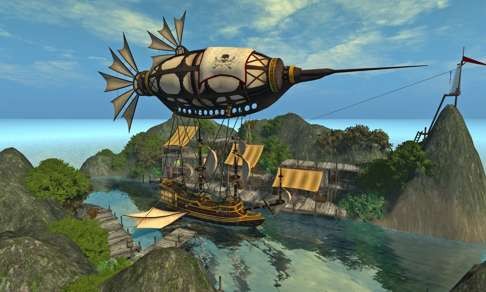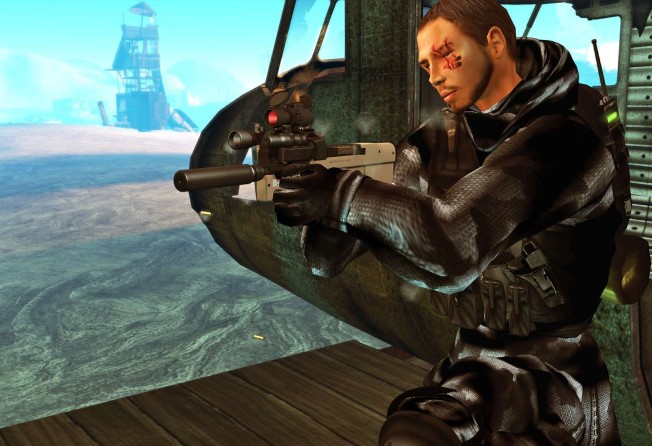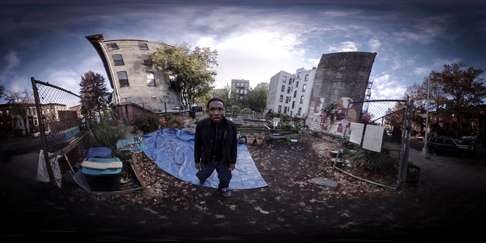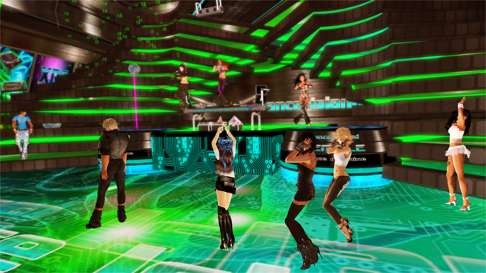
Three steps to the ultimate in escapism: virtual-reality worlds you never need to leave
Pioneers tell Tribeca Film Festival how they see VR evolving, from immersion in virtual worlds to interacting avatars to users creating escapist worlds. Online game Second Life takes us a step closer

“It’s fascinating to see virtual reality finally arrive,” says Philip Rosedale, founder of online virtual world Second Life, during a recent presentation introducing his company Hi Fidelity at the Tribeca Film Festival in New York.
“VR is now as disruptive as the internet was in 1994. We are all about to be profoundly affected by what is happening in VR, although we don’t understand exactly what its impact will be. It’s going to affect our development as a species, as it will be more impactful than any other previous technology,” says Rosedale.
It was a provocative speech that characterised events at The Hub, a varied, 10-day programme of new-technology debates and virtual reality showcases at the Tribeca festival, which took place from April 13 to 24.
The film festival, which was co-founded by Robert De Niro in 2002 to help regenerate Tribeca, an area devastated by the September 11 attacks, says its move into tech reflects how filmmakers are using new technologies such as virtual reality (VR), and platforms such as the internet, to show their work.
Games and filmmaking were discussed, but the event was dominated by VR, which after about 10 years of gestation, seems primed to be the next big media platform.
More than 25 virtual reality exhibits, which consisted of 360-degree VR cinema shows and partially interactive VR experiences, were on show to the public.

Rosedale’s Hi Fidelity is one of the growing number of companies experimenting with VR. Experimenting, at this stage of the game, means developing technology that works effectively enough to put on the market.
Hi Fidelity aims to create a 3D interactive virtual world, a kind of Second Life that users can walk around using 3D avatars. The difference between the new project and Second Life is that the avatars are virtual bodies, with arms, legs, and facial expressions that can be controlled by the user. The ultimate goal is total immersion in a virtual universe.
That goal is currently some years away. VR on show at Tribeca featured what could best be described as immersive movies – stories viewed from a stationary position via a headset, in this case, the Samsung Gear VR. Viewers can look from side to side, and up and down, as the action progresses on its own, like a film.

Seeking Pluto’s Frigid Heart, produced by The New York Times, was TV-documentary-style VR that placed the viewer in space. It was informative but felt like a typical planetarium experience. Perspective 2: The Misdemeanor, by Rose Troche and Morris May, put the viewer in the shoes of a black man who is shot and killed by a white police officer. This was an incredibly disturbing experience, and illustrated the nascent power of the medium. Other exhibits explored interactivity, allowing users a limited amount of interaction with the virtual world.

The medium is changing fast, spurred by venture capitalists looking to invest in the next big thing. Rosedale gives a useful description of where VR is likely to go in the future.
Phase one, “immersion” is next, he says. VR is currently experienced by using a visual headset and stereo earphones, and interaction in the VR space is limited – it’s mainly a 3D viewing experience, with a bit of walking around. But the headset will soon be augmented by a hand controller, which will allow users to navigate a 3D space more effectively, and perform activities which simulate those we do in the real world.
Phase two, Rosedale explains, is getting “people” – that’s us users – into the virtual world, where they can walk around as lifelike avatars and interact with objects, and each other, in a human way.
“We need to get them into spaces where they can look at each other. We need technology that captures the way we move our bodies, and the way we display our emotions,” he says.
Although Rosedale notes “we are not quite there yet”, he did present an intriguing live demonstration in which two of his colleagues entered a virtual room using 3D humanoid avatars that mimicked their controllers’ arm, leg, and facial movements.
The avatars drew on a blackboard, and played a game of catch, albeit not very capably – so far, it’s easier to throw than to receive.

Rosedale’s third phase, “space”, as in physical rather than outer, was futurism to the max.
In the not-too-distant future, he predicts, the whole world will be replicated in 3D on computer hard drives, so we will never have to go out; we’ll be able to visit anywhere on the planet virtually.
What’s more, we’ll be able to create new places which don’t exist outside our computers. “We will use computers to fabricate, for instance, new schools, and even virtual cities – cities that may supersede the kind of cities we have today,” he says, noting that in the future, bricks-and-mortar places like New York may come to be “museums” of a past age.
Only time will tell if Rosedale’s predictions for VR are prophesy, fantasy, or an exemplary form of salesmanship for his new VR product.

But speculation and escapism have always been at the root of new entertainment media, as a philosophical speech entitled “Impact & Escapism in Virtual Worlds” by Dan Gray, head of studio at ustwo games, points out. The company is known for Land’s End, a critically acclaimed VR game about exploring an ancient land.
Noting that VR is often an escapist experience, Gray explored the question “Why is escapism important?” by means of a personal story.
When he was 17, he said, he was in hospital for four months. After three months straight in the hospital, he begged his father to take him outside; his dad smuggled him out in a wheelchair with a blanket over his head. Gray then sat in the passenger seat of his dad’s stationary car for 45 minutes, before returning to the hospital.
Although this doesn’t seem like much of an experience, the mundane location change provided a boost to his morale.
“It was an escape,” he remembers. “Afterwards, I felt my energy coming back.”
It was an inspirational moment Gray explains: “I realised that escapism is incredibly important. Sometimes we need to escape from the world we are in, as it isn’t always a good one. Being able to escape to a place for even just a couple of minutes can make a very big difference.”